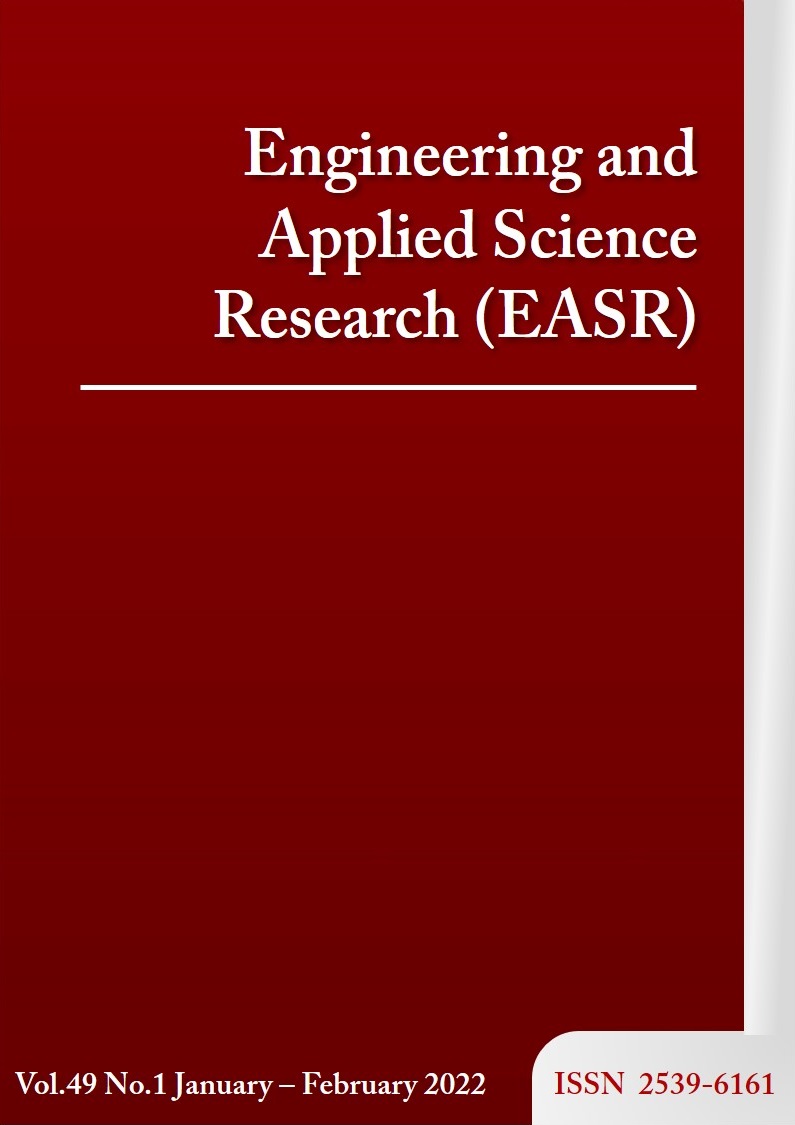Logistic model for adherence to ministry of health protocols and guidelines by public transport vehicles in Kenya during COVID-19 pandemic
Main Article Content
Abstract
To know whether a given public transport vehicle will observe COVID-19 Ministry of Health Protocols and Guidelines in Kenya, a logistic expression was developed based on gender, type of vehicle, distance covered and the possibility of contracting COVID-19 by passengers while on board a given vehicle. Data collection was done by use 112 questionnaires administered on line. The respondents were first year students attending online courses in Kenyan University. Results showed majority of the respondents (41%) used 8-seater vehicle to travel. As for the distance travelled, majority of the respondents (37.3%) covered less than 25 km to reach their home County Headquarters. Possibility of infection in 8-seater and 32-seater vehicle was concentrated in level 3 while that for 14-seater was concentrated in Level 4. For 45-seater and 63-seater vehicles the possibility of infection was in level 2. A model efficiency of 84.8% was found indicating that the model is good. The results of this study provided information on behaviour of public transport sector in Kenya.
Article Details
This work is licensed under a Creative Commons Attribution-NonCommercial-NoDerivatives 4.0 International License.
References
Ouhsine O, Ouigmane A, Layati E, Aba B, Isaifan RL, Berkani M. Impact of COVID-19 on the qualitative and quantitative aspect of household solid waste. Global J Environ Sci Manag.2020;6:41-52.
Ministry of Health Kenya. First case of coronavirus disease confirmed in Kenya [Internet] Nairobi: Briefs on Corona virus; 2020 [Updated 2020 May 31; cited 2020 Jun 1]. Available from: https://www.health.go.ke/first-case-of-coronavirus-disease-confirmed-in-kenya/.
The Public Health Act. Kenya Gazette Supplement No. 41. Kenya: Kenya Gazette; 2020.
Kenya National Bureau of Statistics (KNBS). 2019 Kenya population and housing census volume 4: distribution of population by socio-economic characteristics. Nairobi: Republic of Kenya; 2019.
Gulyani S, Salon D. Commuting in urban Kenya: unpacking travel demand in large and small Kenyan cities. Sustain. 2019;11(14):3823.
Rao ZI, Khan K, Jafri SF, Sheeraz K. Public transportation improvement validation for Metropolitan City Karachi. Eng J. 2013;18(1):55-64.
Gosce L, Johansson A. Analysing the link between public transport use and airborne transmission: mobility and contagion in the London underground. Environ Health. 2018;17(1):1-11.
Nakweya G. Public transport could stifle Africa’s COVID-19 control [Internet]. Nairobi: Public transport could stifle Africa’s COVID-19 control; 2020 [updated 2020 Dec 11; cited 2020 Dec 12]. Available from: https://www.scidev.net/sub-saharan-africa/news/public-transport-could-stifle-africa-s-covid-19-control/.
Tan L, Ma C. Choice behavior of commuters’ rail transit mode during the COVID-19 pandemic based on a logistic model. J Traffic Transp Eng. 2020;8(2):186-95.
Ratanavaraha V, Champahom T, Jomnokwao S, Nambulee W, Klungboonkrong P, Karoonsoontawong A. Analyzing transport mode choice for aging society in Thailand. Eng Appl Sci Res. 2020;47(4):383-92.
Choocharukul K, Eung N. Modeling frequency of using informal public transport and public bus: a case study in Phnom Penh, Cambodia. Eng J. 2018;22(3):109-22.
Osman S, Omari-Sasu AY, Boadi RK. Logit model for the determinants of drug driving in Ghana. Int J Stat Appl. 2016;6:339-46.
Perez-Pena M, Jimenez-Garcia M, Ruiz-Chico J, Pena-Sanchez AR. Transport poverty with special reference to sustainability: a systematic review of the literature. Sustain. 2021;13(3):1451.
Liu SY, Wu TS, Chen YQ. Analysis of influencing factors of traffic jam in Beijing. Sci Tech Informat. 2017;15:177-9.
Borucka A. Logistic regression in modelling and assessment of transport services. Open Eng. 2020;10(1):26-34.
Li X, Zhang Y, Sun L, Qiyang L. Free-floating bike sharing in Jiangsu: users’ behaviors and influencing factors. Energ. 2018;11(17):1664.
Guno CS, Collera AA, Agaton C. Barriers and drivers of transition to sustainable public transport in the Philippines. World Elec Vehicle J. 2021:12(1):46.
Du M, Cheng L. Better understanding the characteristics and influential factors of different travel patterns in free-floating bike sharing: evidence from Nanjing, China. Sustain. 2018;10(4):1244.
Washington SP, Karlaftis MG, Mannering F. Statistical and econometric methods for transportation data analysis. 2nd ed. Florida: Chapman and Hall/CRC; 2010.
Ae Park H. An introduction to logistic regression: from basic concepts to interpretation with particular attention to nursing domain. J Kor Acad Nurs. 2013;43(2):154-64.
Real statistics.com [Internet]. New York: Real Statistics; 2020 [updated 2020 May 16; cited 2020 Dec 12]. Available from: http://www.real-statistics.com.
National emergency response committee on coronavirus. Update on COVID-19 in the country and response measures, as at November 29, 2020. Day 258, Brief No. 250. Nairobi: Republic of Kenyan; 2020.
Miligan LO. Education quality and the Kenyan 8-4-4 curriculum: Secondary school learners’ experiences. Res Comp Int Educ. 2017;12(2):198-212.
Aloul S, Naffa R, Mansour M. Gender in public transportation a perspective of women users of public transportation. Jordan: Friedrich-Ebert-Stiftung; 2019.
Phiophuead T, Kunsuwan N. Logistic regression analysis of factors affecting travel mode choice for disaster evacuation. Eng J. 2019;23(6):309-417.



